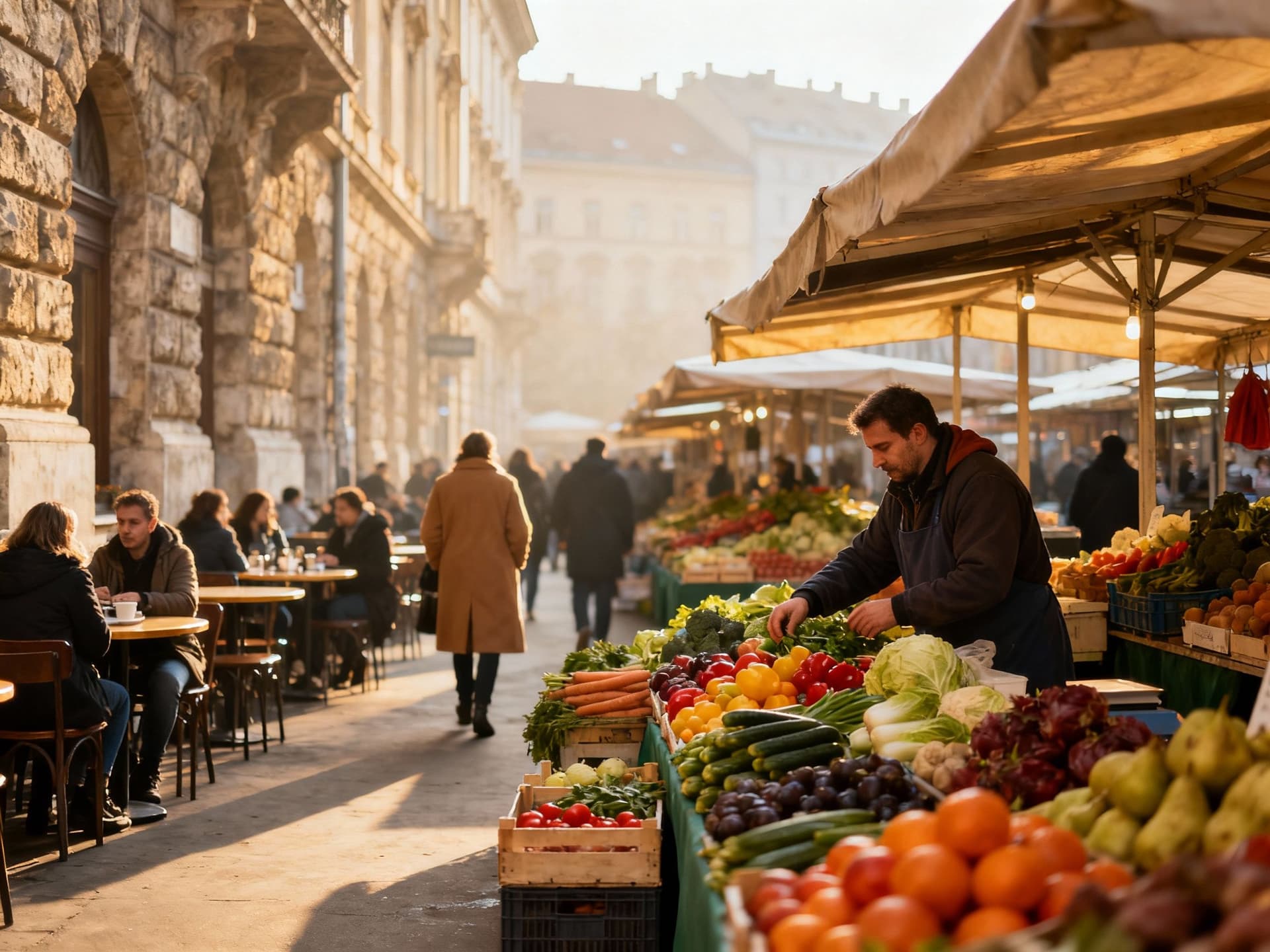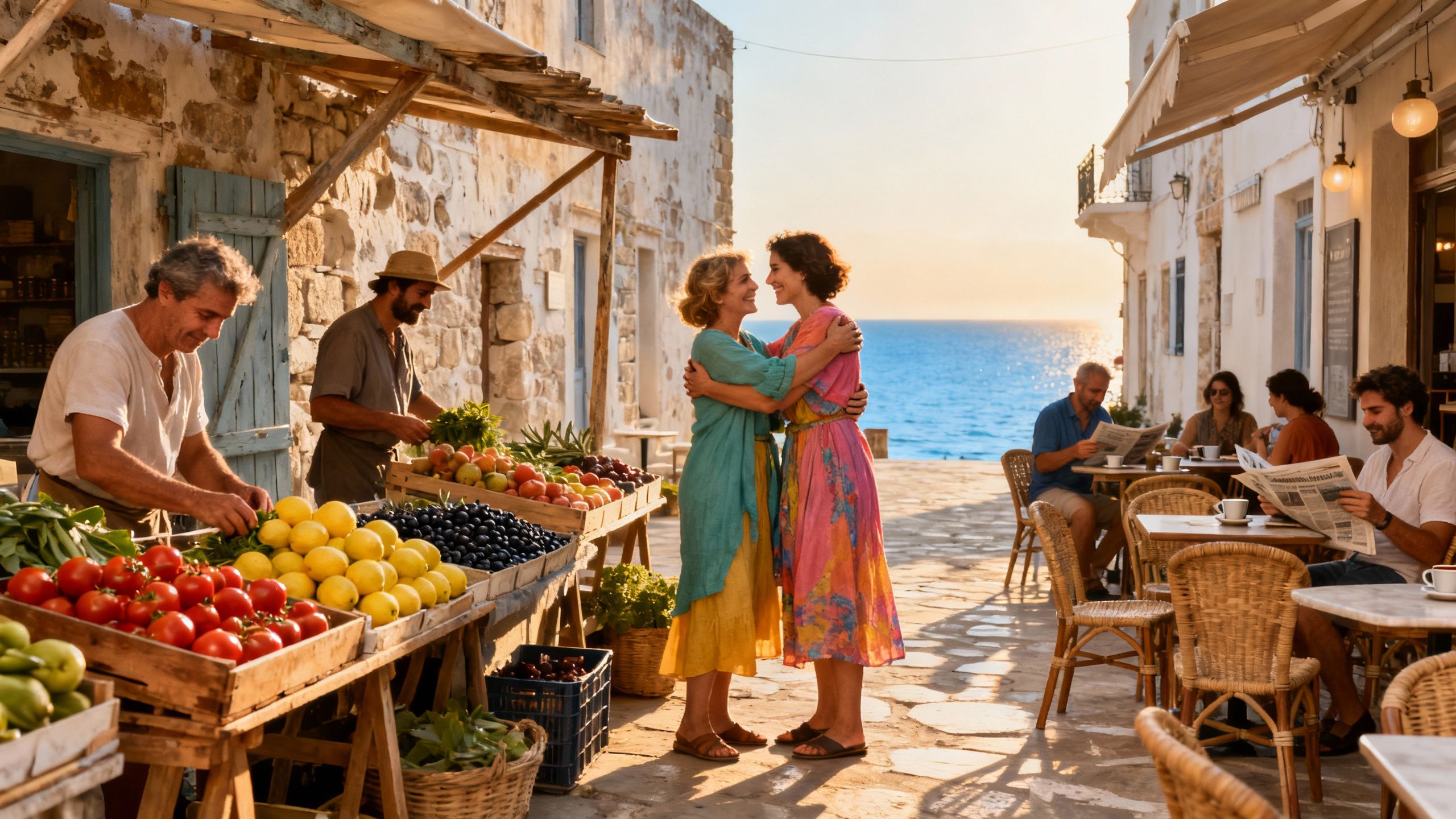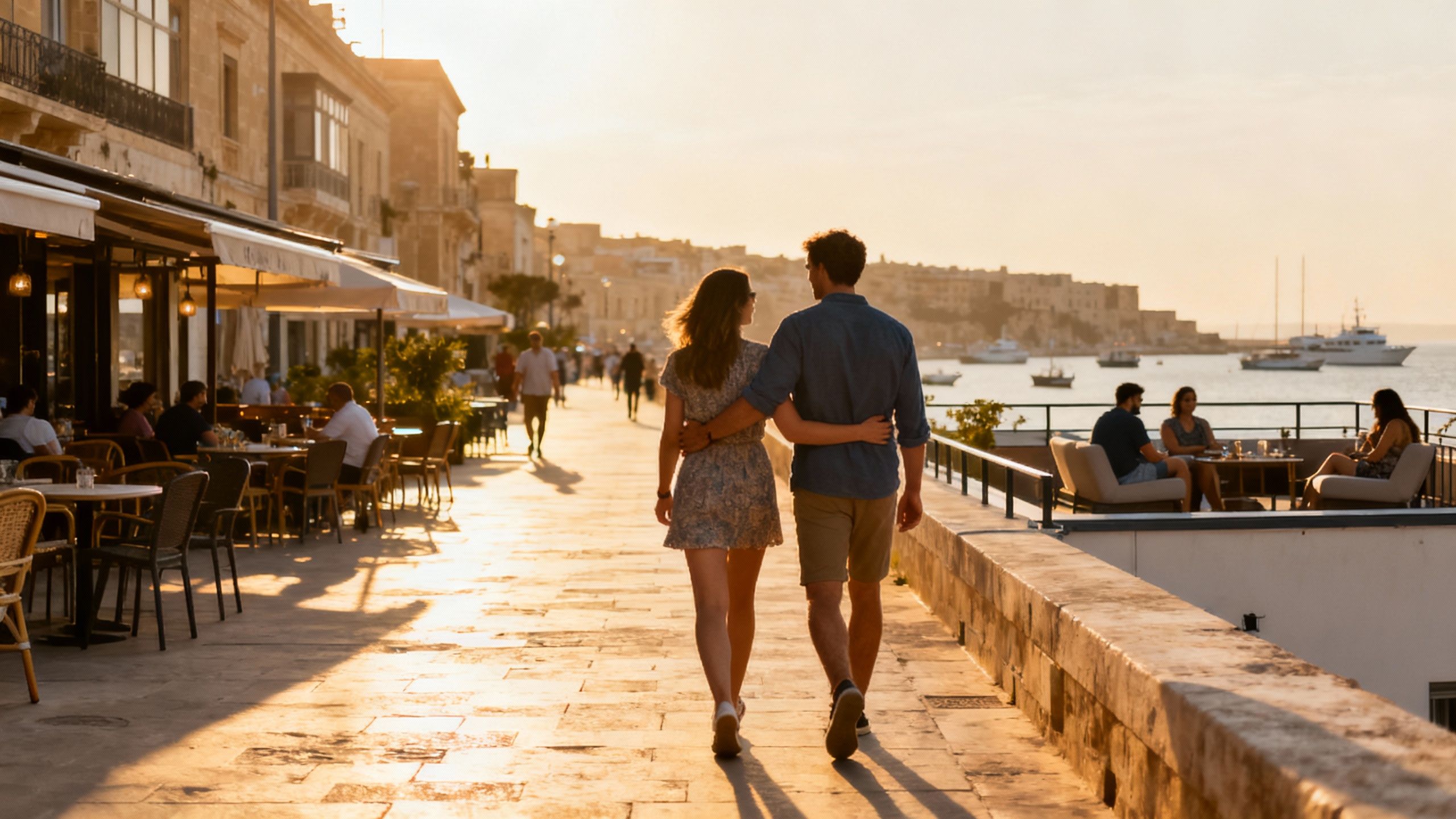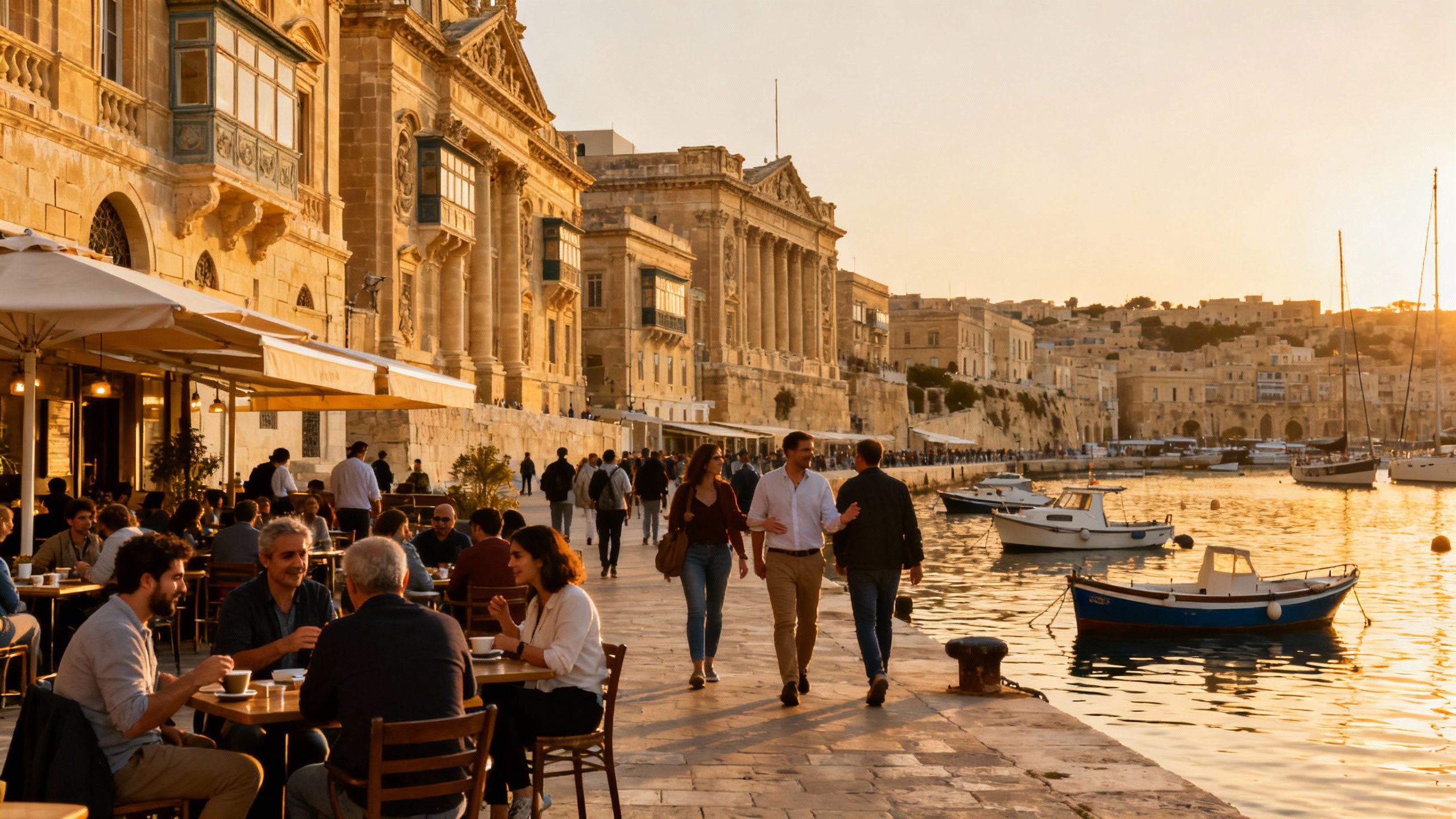How Croatian Rhythm Shapes Mortgage Reality
Pair Dalmatian mornings and Istrian markets with up‑to‑date financing insight: current house price trends, lender realities for non‑residents, and 5 practical steps to budget sensibly.
Imagine a late‑summer morning in Split: a barista pours crema on a ristretto while fishermen haul crates of sardines down the Riva and a stone stairway invites you toward a shaded courtyard. That quotidian choreography — markets, sea breezes, narrow streets that open to unexpected piazzas — is what draws many international buyers to Croatia. Yet the romance and the paperwork arrive together. This short guide pairs the lived pleasures of Dalmatian mornings and Istrian harvests with practical, current financing clarity so you can pursue the life without being surprised by the numbers.
Living the Croatian Rhythm

Croatia’s daily life is territorial: Zagreb mornings belong to cafés on Tkalčićeva and leather‑polished tram rails, Istria’s afternoons to market tables at Pula and Rovinj, and the Adriatic evenings to terraces in Hvar and Korčula. The country’s tempo is driven by seasons — vibrant coastal summers, quiet shoulder months rich with truffle and wine festivals, and brisk, restorative winters inland. For a buyer, this rhythm informs practical choices: a pied‑à‑terre for summer returns differs from a year‑round home that must be winterised and connected to local services.
Coastlines and courtyards: neighbourhoods that matter
If you imagine mornings in Split, the neighbourhoods around Diocletian’s Palace — radiating streets like Marmontova and the quieter Voćni trg — offer a daily intimacy with history and a short walk to the harbour. In Dubrovnik, Lapad and Gruž feel domestic and less touristified than the Old Town; in Istria, towns such as Rovinj and Motovun marry stone villas with agricultural hinterland. Each place suggests different financing needs: historic centre apartments often require renovation budgets and special permits, while newer coastal developments may offer mortgages tied to construction phases.
Food, markets and the social currency of place
Markets define neighbourhood life: Dolac Market in Zagreb hums with early shoppers, Split’s Pazar spills citrus and olives, and Vis preserves a quieter, island‑time pace. For buyers, proximity to these social anchors changes both quality of life and resale characteristics: properties a short walk from weekly markets typically hold appeal for long‑term renters and discerning buyers. These lifestyle cues are important when your mortgage advisor and agent sketch scenarios for rental income, seasonal occupancy and upkeep.
Making the Move: Practical Considerations

The market backdrop matters. Official indices from the Croatian Bureau of Statistics show double‑digit annual growth through 2024 and into 2025 in many regions, with the Adriatic coast and inland provinces recording particularly strong gains. At the same time, recent tax reform signals a policy shift to tax property differently — a factor that changes holding costs and rental strategies. Understanding these forces early lets you calibrate deposit, mortgage tenor and contingency for renovation or seasonal vacancy.
Mortgage reality for international buyers
Banks in Croatia do lend to non‑resident buyers but conditions vary by bank and borrower profile. Typical requirements include a larger deposit (often 30–40% for foreign buyers), proof of stable income or assets, and property valuation performed by an accredited appraiser. Interest rates and loan‑to‑value change with macro conditions; recent official data show persistent price growth which has encouraged lenders to tighten underwriting in some segments. A local mortgage broker or an international bank with Croatian branches can convert lifestyle aspirations into a financing plan that fits seasonal occupancy and expected rental yields.
Stepwise financing checklist
1. Pre‑qualify with a Croatian lender or international bank to understand realistic LTV and documentation. 2. Budget for at least 30% deposit if you are a non‑resident; plan extra for taxes, notary and renovation. 3. Secure a conditional sales contract (preliminary contract) with clear payment schedule and penalties. 4. Order an independent valuation and due diligence on encumbrances before finalising the mortgage. 5. Arrange currency and remittance strategy if your income is outside the euro/HRK to avoid FX surprises.
Insider Knowledge: What expats wish they'd known
Buyers frequently underestimate seasonal variability and the operational demands of a Croatian home. A renovated stone villa on Hvar can feel like a lifetime purchase in July and an empty, maintenance‑heavy commitment in November. Smart buyers price in winterisation, local management and the fact that islands and historic centres may have limited construction windows governed by conservation rules.
Cultural and legal small print that alters budgets
Local customs — from seasonal tenancy practices to municipality permissions for facade restoration — can mean months of delay and extra cost. Croatia’s statistical releases underscore rapid price changes in recent quarters, which makes timing and local counsel critical. Enlisting an attorney familiar with coastal conservation rules, and an agent who understands which neighbourhoods resist short‑term rental saturation, protects both the life you want and the investment beneath it.
Practical tips from residents and seasoned buyers
- Buy outside peak season to inspect an area’s year‑round rhythm, not the summer veneer.
- Budget for a trusted local property manager if you plan seasonal rentals or long absences.
- Consider purchase structures — Croatian SPV or personal title — with cross‑border tax advice to optimise inheritance and wealth transfer.
- Insist on a municipal land‑use check early; coastal restoration often carries stricter constraints and higher costs.
If the lifestyle draws you — morning markets, neighbourly lunches, sea exposure — let those scenes anchor the search. Then bring the facts: recent DZS indices, current lender terms and the new property tax framework when you sit with advisers. An agent who knows which streets draw locals and which are seasonal façades will save you money and time; a good mortgage broker will shape a plan that accommodates both renovation and the quieter months when you’ll appreciate insulation more than a sun terrace.
Relocating from London to Mallorca in 2014, I guide UK buyers through cross-border investment and tax considerations. I specialise in provenance, design integrity, and long-term value.


